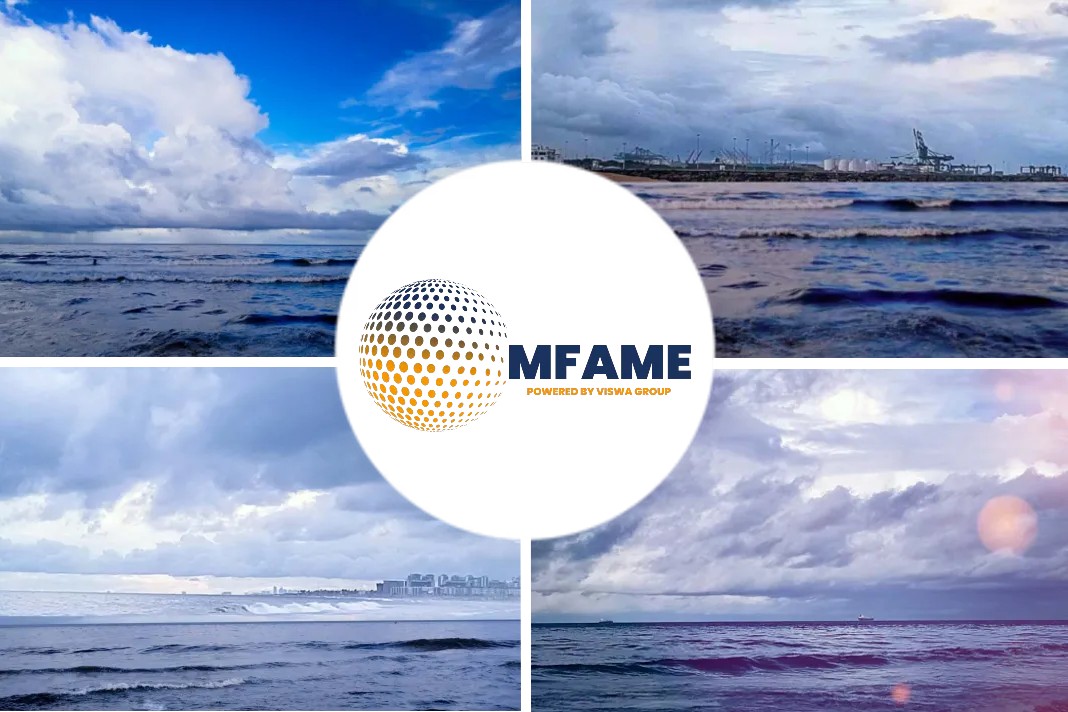- Wärtsilä orderbook fully booked for the remainder of 2019, and had secured orders for delivery for dates as late as the second half of 2020.
- Orderbook evenly split between newbuilds and retrofits, with a large proportion of orders for closed-loop and hybrid systems and the majority for open-loop scrubbers.
- Around 3,000 scrubbers likely to be installed by the end of 2019, and a further 1,000 units on order.
- Conversion of 40,000 vessels that are likely to be moving from HSFO to MGO or LSFO is seen.
- Rebound in orders expected from Q1 2020 and into the second half of next year, depending on the spread between HSFO and the low sulphur options in the market.
- Research into new EGCS solutions, investigating the possibility of new catalysts or new washwater treatment options is being carried out.
The article published in The Motor Ship, elaborates their discussion on the current state of the market, with Sigurd Some Jenssen, Director of Exhaust Gas Treatment at Wärtsilä, during Nor-Shipping 2019.
Here’s an excerpt from it.
Evenly split orderbook
Jenssen noted that Wärtsilä’s orderbook was fully booked for the remainder of 2019, and that the company had secured orders for delivery for dates as late as the second half of 2020.
The company has received orders for over 700 scrubber systems, and has more orders in hand than all of its currently delivered systems.
The orderbook is almost evenly split between newbuilds and retrofits. While a relatively large proportion of its orders have been for closed-loop and hybrid systems, the majority of its orders have been made for open-loop scrubbers.
V-SOx design majority of sales
A similar split is seen between Wärtsilä’s compact inline scrubber system (I-SOx), its Q-SOx system, or its conventional venturi scrubber design (V-SOx), with the V-SOx design accounting for the majority of sales.
- The V-SOx design and I-SOx designs are best suited to smaller engine configurations, ranging between 1 and 35 MW and 1 and 20 MW,
- The Q-SOx is suited to larger installations, ranging between 40 and 70 MW.
Wärtsilä’s scrubbers demand drivers
Demand for Wärtsilä’s scrubbers has been driven mainly by
- the tanker,
- containers,
- bulker, and
- the cruise and ferry segments.
Jenssen said that with around 3,000 scrubbers likely to be installed by the end of 2019, and a further 1,000 units on order, plenty of opportunity to convert some of the 40,000 vessels that are likely to be moving from HSFO to MGO or LSFO is seen.
New orders slowdown
Looking at the broader market, Jenssen notes that the pace of new orders has slowed slightly, after “an explosion of interest” in 2018.
The main driver for shipowners was ensuring that the installation could be completed by 1 January 2020, in order to be ready for the introduction of the IMO Global Sulphur Cap, Jenssen noted.
A slight slowdown in orders is seen, as shipowners who have not yet secured slots adopt a wait and see attitude towards the new regulations.
Rebound of orders expected
Jenssen said that they expect to see a rebound in orders from Q1 2020 and into the second half of next year, as a lot of people are waiting to see the spread that develops between HSFO and the low sulphur options in the market.
Slots
Other factor that encourages shipowners to delay booking retrofits is that many of the available slots are “off the beaten track” and might involve yards with less experience of undertaking retrofits.
“Some people are taking the view that it is better to wait for a few weeks or months in 2020, in order to avoid the risk of delays if the installation doesn’t work optimally.”
Lead times
Lead times are another hindrance to rushing to fit in orders before the end of 2019. “We anticipated this tightness and have been preparing to ensure that our supply chains are in order,” Jenssen said, adding that Wärtsilä had moved to diversify its suppliers between Europe and Asia.
Customers choosing providers
Customers sometimes consider the quality and range of service options, as well as a product’s service history when choosing providers.
For some new installations likely to be still in service close to 2050, another consideration might be continuing service innovation.
Wärtsilä’s EGCS solutions research labs
Wärtsilä has inaugurated a new laboratory to conduct research into new EGCS solutions, which is investigating the possibility of new catalysts or new washwater treatment options. Wärtsilä already offers a number of additional solutions for customers who want to achieve standards above existing regulatory minimums.
Optional washwater treatment system
Wärtsilä offers
- an optional washwater treatment system for open-loop systems which removes a large portion of the particles captured in the scrubber from the washwater.
- Concluded a pilot project to improve PM capture by up to an additional 20%, which involves a three-stage scrubber process for an open-loop system, a modified filter and some design modifications.
“We are committed to this market over the long term,” Jenssen concluded.
Jenssen also citing Wärtsilä’s investments to strengthen its supply base and expand its in-house engineering capacity as well as engineering hubs expansions during 2018 and 2019 to support the increased growth.
Did you subscribe to our daily newsletter?
It’s Free! Click here to Subscribe!
Source: The Motorship

















Thank You for the wonderful blog
Thank you for reading and commenting.
Keep watching this space for more.
Regards,
Team Mfame